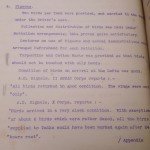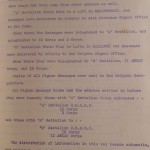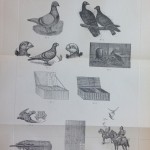Selected by Lianne Smith, Archives Services Manager
Summary of Tank Operations, 2 Brigade, Heavy Branch, Battle of Messines, June 7th 1917
Written 22nd June 1917
Section 4: Pigeons
This report can be found in the papers of J F C Fuller, in 1917 General Staff Officer Grade 1, Heavy Branch (later Tank Corps). In assessing the success of the operation, the report considers various aspects, including the use of carrier pigeons as a means of communication from tanks during battle.
The details of how this was achieved are fascinating. The report describes how ‘two birds per tank were provided, and carried in the tank under the driver’s seat’. Turpentine and cotton waste were provided so the men could clean their oily hands before handling the birds. Upon their release from the tanks, the birds flew to pigeon lofts where their messages could be relayed to signal offices for further transmission by telegraph or telephone.
The use of pigeons was successful, the report stating that ‘the system worked admirably throughout the battle’, and ‘with the exception of about 6 birds which were rather dazed, all the birds supplied to tanks could have been worked again after 24 hours rest’. However it does warn that ‘birds must be released at least two hours before sunset; otherwise they will not arrive before the following morning’.
Pigeons have had an important role to play as messengers in war during the 19th and 20th centuries. Some of these animals have been honoured for the role that they have played. A pigeon was awarded the French Croix de Guerre with Palm for heroic service delivering 12 important messages during the Battle of Verdun in 1918 – on her final mission, she delivered a message despite having been shot. During World War 2, the PDSA Dickin Medal was introduced to honour the work of animals in war – 32 pigeons were awarded the medal.
The homing instinct of pigeons is well known, but I find it astonishing how the pigeons’ instincts remain despite the battle conditions in which they were operating.
Ref: Fuller 1/5
www.kingscollections.org/catalogues/lhcma/collection/f/fu20-001



